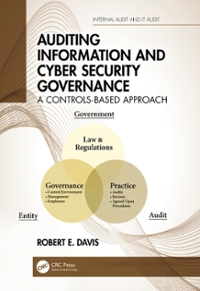Question
Pinewood Industries uses a perpetual inventory system, recording cost of goods sold each time there is a sale, and updating inventory records for each new
Pinewood Industries uses a perpetual inventory system, recording cost of goods sold each time there is a sale, and updating inventory records for each new purchase of goods. The company has the following transactions and events at 31 December 2019, the end of the accounting period:
a. Pinewood has a term loan from its bank, of $400,000. Interest at the rate of 3% per annum is paid at the end of each month. Interest for December was not paid until 2 January, in an oversight. A payment of $15,000 principal was also paid on 2 January 2020.
b. At the beginning of 2019, office supplies inventory amounted to $700. At the end of 2019, account of inventory showed that there was $350 on hand. During 2019, office supplies amounting to $5,400 were purchased and the inventory account was increased as a result.
c. On 1 September 2019, Pinewood invested $120,000 excess cash in an interest-bearing investment for a yield of 4%. Interest will be paid at maturity at the end of February 2020. The investment has been recorded but the interest for the year has not.
d. At the beginning of 2019, there was a balance of $6,000 in the prepaid insurance account related to a general fire insurance policy that will expire on 1 April 2020. There was also a prepaid amount of $1,700 relating to vehicle insurance, expiring 28 February 2019. In 2019, a six-month vehicle policy costing $4,600 was purchased on March 1, and a further six-month policy costing $5,490 was purchased after the first one expired. The policies purchased in 2019 were debited to prepaid insurance.
e. A customer returned goods for full credit. The goods have a cost of $1,600 and a retail price of $7,400. The goods had been purchased by the customer on account and correctly recorded on initial sale. When the return was made, inventory was debited and accounts receivable credited for $1,600.
f. The accountant has reviewed the invoices that arrived in early January 2020. The following items are for goods and services purchased or consumed in December: Direct Advertising Limited $4,700, Global Cell Communications, $750, Ethier Electricity, $1,200, and Provincial Natural Gas, $2,600.
g. The accountant reviewed the invoices that were issued to customers in early January and noted the following sales that took place in December: Customer Ngyun, $65,700 (cost of goods shipped, $46,300), Customer Pedras, $71,500 (cost of goods shipped, $45,600); and Customer Weiler, $26,400 (cost of goods shipped, $13,200). Neither the sale nor the product removed from inventory was recorded in December.
h. There was a payroll of $76,300 paid on 3 January; this covered the period of 30 December to 3 January.
i. The bank statement indicates that the bank, in error, cashed a cheque on the company's bank account in December 2019 for $3,400. This cheque was written by Pinewood Industrial Ltd., not Pinewood Industries. Pinewood has reported the issue to the bank, and the bank has promised to reverse the amount.
j. A tenant in the administration building pays $1,600 rent per month. The tenant paid one year's rent on 1 May 2019. The cash received was credited to rental revenue at that time.
Required:
Give the adjusting entry (or entries) that should be made on 31 December 2019, for each item. If an adjusting entry is not required, explain why.
Step by Step Solution
There are 3 Steps involved in it
Step: 1

Get Instant Access to Expert-Tailored Solutions
See step-by-step solutions with expert insights and AI powered tools for academic success
Step: 2

Step: 3

Ace Your Homework with AI
Get the answers you need in no time with our AI-driven, step-by-step assistance
Get Started


